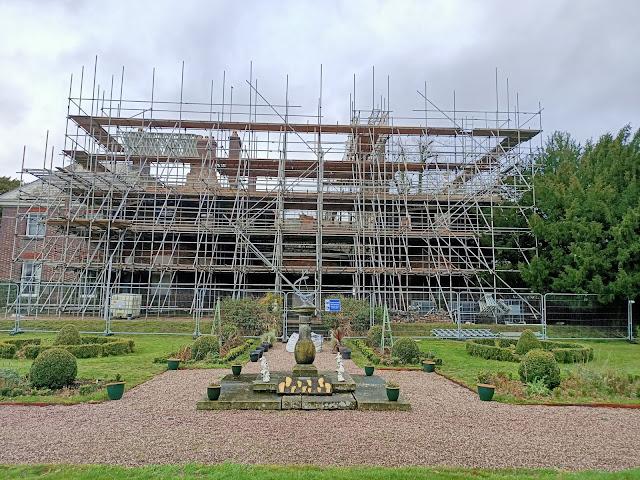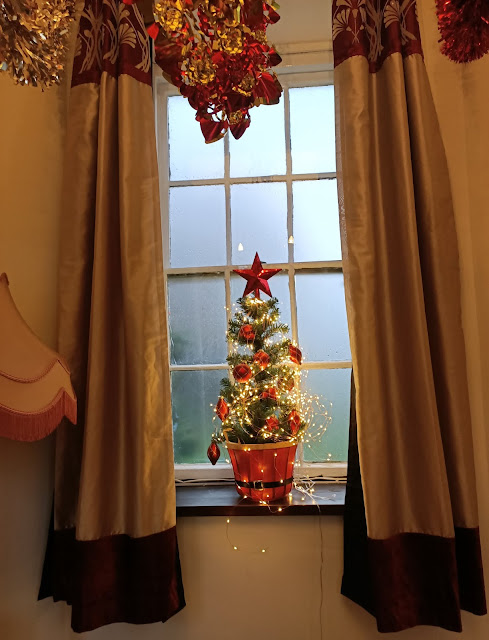Cherries for the Cherry Field
Every now and then, we get an unexpected phone call, and last week was one such occasion. It came from the branch president of Betley WI, Pamela Clarke. As a gesture of bonhomie, and to mark the founding of Betley Women’s Institute at Betley Court, Betley WI would like to donate two cherry trees to be planted in the grounds. The origins of Betley WI came as news to me, and I understand tea parties at Betley Court were how it started (I would joyfully receive any stories on this from Betley villagers). According to their website, this happened on 9th November 1938, making their branch 83 years old. There is another connection with Betley Court in that one of our current residents is also a member, and she will be receiving the two new trees on our behalf, in these socially-distanced times.
 |
| Prunus serrulata Kansan. Photo Bower & Branch |
I understand the cultivar chosen by Betley WI is Prunus serrulate Kansan, which is quite exciting as it is one of the showiest of the flowering cherries. The variety is synonymous with Kwanzan or Sekiyama (meaning it goes by these other names sometimes in older reference books) and in Japanese is represented as:
関山
This striking pink cherry was originally bred in Japan during
the Edo period (1603-1868), a particularly stable period of Japanese history.
Enjoyment of the arts and culture was popular, and the cultivation of
blossoming cherries and art in its own right. P. Kansan came about as a
result of multiple interspecific hybrids based on the Oshima cherry. In other
words, a dedicated Japanese gardener crossed two cherries from different
species which resulted in this pretty, ornamental cherry tree. As a result, they
are purely ornamental, and don’t produce fruit. Usually, they are propagated by
cuttings.
When I was younger, I received a postcard from my auntie Monica, who was enjoying one of the many Japanese cherry blossom festivals, known as sakura on an overseas trip. The postcard portrayed a heavenly scene of carefully pruned trees, covered in pink blossom against an azure blue sky, that has always stayed with me. Closer to home, Betley has its own mini-sakura each spring, as cherries come into flower all over the villagers’ gardens. There is the very finest example of a cloud cherry tree outside Walnut Cottage, on the Main Road, pruned to perfection, which delights me every year and will be in flower in just a few weeks.
 |
| Gorgeous cloud cherry tree, outside Walnut Cottage. Photo: Google Earth |
With this being the inauguration day for the incoming President of the United Sates, Joe Biden, it would be remiss of me not to mention the cherry trees of Washington DC, which has its own National Cherry Blossom Festival every year. Something for the Biden family to enjoy, if they have a few hours free! There is a great story behind the fact that the United States capitol has enough non-native cherry trees to justify a blossom festival of its own. In 1885, Eliza Ruhamuh Scidmore, an author and geographer, started a twenty-four-year campaign to have flowering cherries planted in Washington DC, after becoming enchanted by them on research visits to Japan. Eventually, she succeeded, a testament to her persistence. On the 27th March 1912, Mayor Yukio Ozaki of Tokyo gifted the city of Washington DC numerous ornamental cherries as an act of friendship between the two cities, and the rest, as they say, is history.
As for Betley WI’s gift of friendship, we are planning to
plant them in an area of the garden we call the paddock. In one of the earlier
surveys of the garden, this area is marked as ‘the cherry field’. It seems
rather fitting for the trees to join our other specimen trees there! Incidentally,
Prunus serrulate Kansan is the second most planted flowering cherry in
Washington DC. That’s quite a recommendation of its beauty!
All best wishes
Ladybird Su




I've counted eight flowering cherries in our (new to us) garden in Madeley and I can't wait to see them in flower for the first time. Trouble is a lot of them are much too near the house and are getting towards the sort of size that could cause problems.
ReplyDeleteThey sound lovely. If you are concerned about the trees near the house, then seek advice from an arboriculturallist. Cherries typically only live for 15-25 years, so don't take on the dramatic height of, say a mighty oak. Enjoy the blossoms in a few weeks!!
DeleteSome, that are planted in a hedge are quite thin, only look a few years old and have had some top growth cut off when the hedge has been trimmed. Others look about 20 years old and we were left an aerial photograph from 2010 which shows them as quite sturdy then. Yet others are planted just 5ft from the house wall.
ReplyDeleteThere again the garden is full of trees with an enormous silver birch, a smaller mature weeping birch, two weeping willows, three medium size acer trees, a crab apple and the aforesaid eight cherries. That's not including the six Japanese acers and the gorgeous witch hazel that is currently giving a wonderful display of its bright golden yellow flowers.